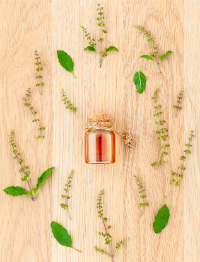Calcium Essential for Stong Bones, Sound Sleep
/Did you know that Calcium, the most abundant mineral in the human body, is not only essential for strong bones, it also supports healthy functioning of the cardiovascular, musculoskeletal, and nervous systems? Research shows a relationship between Calcium intake and risk for heart disease, colorectal cancer, kidney stones, PMS, and managing a healthy weight. When it comes to sound sleep, insufficient dietary Calcium has been associated with insomnia. Calcium is instrumental in the way our brains cycle through the stages of sleep and in the ability to generate brain chemicals, including tryptophan, associated with deep sleep.
The best way to get calcium is through whole foods. Dairy products are abundant in the mineral in a form that's easy for most people to digest. Vegans sources of this mineral include almonds, dark leafy greens, and tofu. However, figuring out how much calcium you're actually getting from veggies is tricky. If a vegetable contains oxalic or phytic acid, then the calcium may be poorly absorbed because of the acids. For example, 1 c. of frozen spinach contains nearly as much calcium as 1 c. of milk, but only a tenth as much is absorbed because of the oxalic acid.
For a healthy adult, the recommended intake for a Calcium supplement is 1,000 - 1,500 mg daily, depending on health status and lifestyle habits including exercise. There are many factors and forms of calcium supplements (e.g., carbonate, citrate), that affect how well the body absorbs the mineral. Also, calcium supplements can interact with other medications. Too much calcium can stress other bodily systems, leading to health problems. For these reasons, consult with Dr. Bossio as to which type and dosage of calcium is best for you.
Image Attribution: elena.hramowa/bigstockphoto.com
References



















